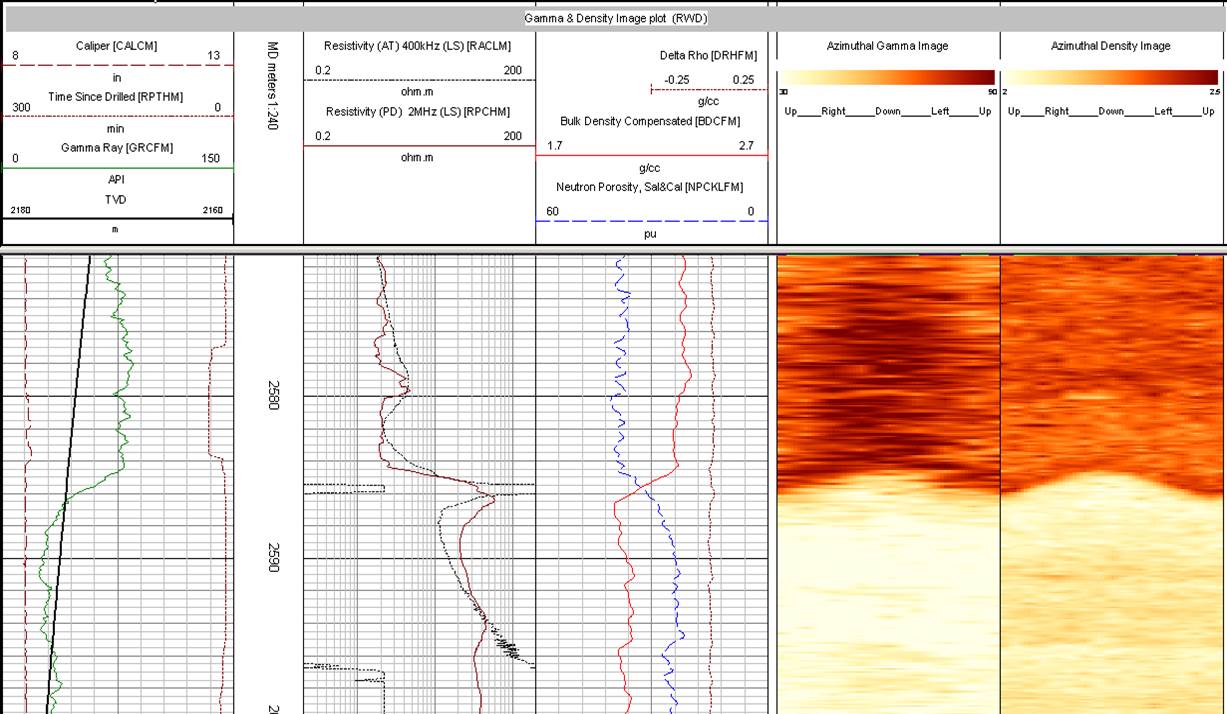Upstream oil and gas exploration is often headed by drilling engineers who oversee the exploration, drilling, and extraction of hydrocarbons. To aid their search, they drill boreholes and employ sensors and instruments to ensure that wells are dug as safely and economically as possible. Their ability to make accurate and timely decisions is critical, both from a business and safety standpoint.
As an example, after a bore hole is drilled, several types of instruments and sensors are put down the borehole to collect a wide array of information about the geologic structure of the area. This technique is referred to as wireline logging. Many terabytes of data can be collected that require extensive analysis to understand the geologic structures and whether the area can produce enough hydrocarbons to be a profitable well.
Terabytes of raw data are collected, which isn’t useful to the engineer until it’s analyzed. Processing this data means shipping it back to the office where it can be uploaded to on-premises databases or to the cloud for analysis. This lag slows down the drilling and well completion processes, which increases cost and reduces the overall profitability of the company.

Wireline datalog, courtesey of Baker Hughes Inc.
Cloud computing at the edge
Instead of transporting that data back to the office and uploading it to the cloud, why not bring the cloud onsite? A minified cloud has the same interface and capabilities as a full-sized cloud, with the added benefit of being able to throw it on a truck and bring it to a remote drilling site.
Onsite cloud computing with high-performance CPUs and GPUs allows engineers to process and analyze large amounts of raw sensor data in near real-time with streaming analytics and machine learning. Good decisions can be made quickly, which maximizes the value of onsite drilling and sensor equipment, decreasing the risk of a dangerous event. The now-processed data has much smaller footprint and can be easily sent back to headquarters for advanced analysis. Faster feedback and better data mean higher margins and better safety—a win for all involved.
Roving Edge Devices take the cloud to the most remote locations
Oracle Roving Edge Devices (REDs) are our answer to the minified cloud problem. REDs are ruggedized cloud computing and storage services that can travel to the most remote places on earth and run in a disconnected environment. REDs extend Oracle Cloud Infrastructure (OCI) by allowing OCI Compute virtual machine instances and OCI Object Storage to synchronize to the RED using the same portal and tenancy tooling as our public cloud region. With high-performance processing close to the data sources, RED eliminates the latency in producing data results sets and enables faster insights into the data.

Oracle Roving Edge Devices (REDs)
REDs have the following specifications:
-
Each RED is optionally encased in a military-grade, ruggedized case that provides electromagnetic protections to limit emanations and interference. It makes it look cool, too.
-
A ruggedized RED weighs a mere 84 lbs (38 kg) with handles that allow it to be carried by two people or strapped to a pack animal if you’re going really remote.
-
REDs contain two Intel Xeon Gold 6230T CPUs, with total of 40 OCPUs (or 80 vCPUs), 512 GB of RAM, an embedded NVIDIA Tesla T4 graphics processing unit (GPU), and 61 TB of raw NVMe storage. That’s a lot of power.
With loads of power, a light footprint, and the same tools and interface found on Oracle Cloud, the RED truly brings cloud computing to the most remote areas of the world.
Try it yourself
Interested in trying RED for yourself? If you’re already using OCI, contact your account representative to order RED and discuss your use case.
For more information, interested agencies can contact us at Roving Edge Infrastructure Team.
Special thanks to Ronald Mayfield, who generously provided insight and feedback about RED and edge computing.